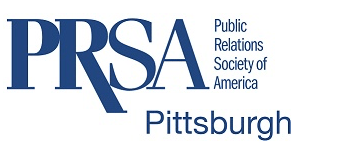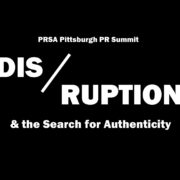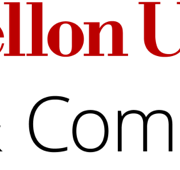By Erin O’Connor, Account Supervisor at WordWrite Communications
[ This is a post from WordWrite Communications, a strategic communications consulting firm based in downtown Pittsburgh. ]
On November 9, 2016, millions of Americans tuned in to the morning news with a general sense of wonder. A business mogul, turned reality TV star, turned political candidate had been elected president of the United States, and every campaign analyst and statistician in the country crawled back into their foxholes to burn their Excel spreadsheets.
Though, despite the widespread shock and awe that ensued after the votes were tallied, one man who had been hired by the Trump campaign remained unsurprised by the results. Not because he was privy to some sort of foreign espionage or because he had savant-like tendencies, but because he knew he and his team had achieved something that no one had done before.
Flash back to summer 2016. Candidate Donald Trump engages data-analytics company Cambridge Analytica to aid his social media efforts. Unlike much of Trump’s decision-making during his campaign, the choice to bring on the company and its British CEO, Alexander Nix, went relatively unnoticed. After all, Hilary Clinton had relied heavily on social media throughout her campaign, and worked with big names like Google and Dreamworks. Why was this selection any different?
But it was. Nix’s strategy was complex, built around the idea that by cross-referencing people’s behavior on social media with their inherent psychological traits he and his team would be able to predict with incredible accuracy what message would attract particular voters. This was unique – in the past, political campaigns relied primarily on broad demographic data to drive decision-making. Trump was now using targeted psychographics. According to comments Nix made in a speech last fall, his team was “able to form a model to predict the personality of every single adult in the United States of America.”
Pretty soon, every message candidate Trump shared was driven by some sort of data point. Canvassers were provided with an app with which they could identify the political views and personality types of every household, so they could tailor their conversations. Before the third presidential debate, Trump’s team tested more than 150,000 variations of social media ads to find the right wording for his arguments.
Flash forward to now. What Alexander Nix and Cambridge Analytica achieved is noteworthy, not just because they helped Donald Trump defy conventional wisdom, but because they’ve taught the marketing world something very important about how to use social media for grassroots campaigns: Find the cross-section of people that align with your cause, and tailor your messaging as intricately as possible based on their beliefs, not simply their broad demographic profile.
For the past several years, our firm has worked with a number of non-profits and advocacy organizations to help them utilize social media as a tool to enhance their outreach efforts. We call it digital advocacy, the process of using technology to mobilize advocates around a particular cause. Think of it as a fancy term for the 21st-century method of walking around neighborhoods asking people to sign a petition. We take a host of digital tactics – blogging, social media, email, data analytics – and create a program that reaches the right audience in the right place at the right time.
This is more of an evolution than a revolution – marketers have been using digital strategy for years to help encourage users to buy a certain product or service. But what makes digital advocacy unique is the revolutionary role it plays in the nonprofit and political sectors.
Gone are the days of spending months soliciting volunteers to canvass local neighborhoods in hopes of adding a handful of names to your constituency. Never again will it take years to rally together a group of people who will stand ready and willing to advocate for your cause at a moment’s notice. And enticing people to donate can be achieved with the click of a button.
While we understand nonprofits and advocacy groups don’t always have access to funding that rivals that of a gargantuan U.S. presidential campaign, the beauty of the internet is that the tactics and methodology used by Alexander Nix and Cambridge Analytica can be evaluated and appropriately implemented on a much smaller scale, for much less money, with much less time. And because a blog would be nothing without some sort of list, we’ve put together a few tips for organizations looking to implement the latest digital advocacy techniques:
Create a game plan based on your audience’s behaviors
Learn as much as you can about your target audience and paint a picture of your ideal advocate. Use that as a baseline for determining your tactics. For instance, if you learn that because of the nature of your cause, most of your advocates likely live on Facebook, but not on Twitter or LinkedIn, focus your efforts accordingly.
When building advertising audiences, start with demographics and build with psychographics
Per Nix’s findings, when building your target audience for your advertising efforts, consider people’s attitudes vs. simply who they are and build from there. If your audience is primarily comprised of females in their 20s, what does that person look like? What is their behavior, and how does that behavior translate to their activity on and off social media?
Stay in touch
Once you’ve attracted supporters for your cause, don’t go silent until you need them for something. Keep in touch with that audience by sending them email updates, or continuously updating your website and social platforms with new information.
Use the best tools
Now that digital advocacy has taken off, there are hundreds of tools to help groups expand their campaigns. Take for instance Pittsburgh-based influencer company The Motherhood. They’ve built a platform that can track down almost any type of blogger influencer out there with unprecedented precision – from environmental enthusiasts to moms who are concerned with the future of education.
Regardless of your budget, targeting to engage the right audience, at the right time, and in the right place, has become much easier with the advent of internet tools. Start with a cause, learn more about your audience and create a program that speaks uniquely to them.
This year, PRSA Pittsburgh has partnered with locally based breast cancer foundation, A Glimmer of Hope, to help raise awareness for their cause. For more information on the organization, please visit http://www.symbolofthecure.com/about.
Erin O’Connor is an account supervisor at WordWrite Communications. She can be reached at erin.oconnor@wordwritepr.com.
 The PR Summit is just around the corner, and PRSA Pittsburgh is proud to bring Cards Against Humanity’s Jenn Bane to our first annual event. As we discussed in our blog post last week, the summit is designed to challenge how you think about the risk of disruption and how to build authentic relationships with your audience.
The PR Summit is just around the corner, and PRSA Pittsburgh is proud to bring Cards Against Humanity’s Jenn Bane to our first annual event. As we discussed in our blog post last week, the summit is designed to challenge how you think about the risk of disruption and how to build authentic relationships with your audience.









 Bridgette Borst Ombres is a former television news reporter turned PR and marketing professional with a decade of experience working in the communications field across agency, corporate and nonprofit sectors. Bridgette is the director of marketing and communications at a tech company in Pittsburgh and also consults for a variety of businesses.
Bridgette Borst Ombres is a former television news reporter turned PR and marketing professional with a decade of experience working in the communications field across agency, corporate and nonprofit sectors. Bridgette is the director of marketing and communications at a tech company in Pittsburgh and also consults for a variety of businesses.

